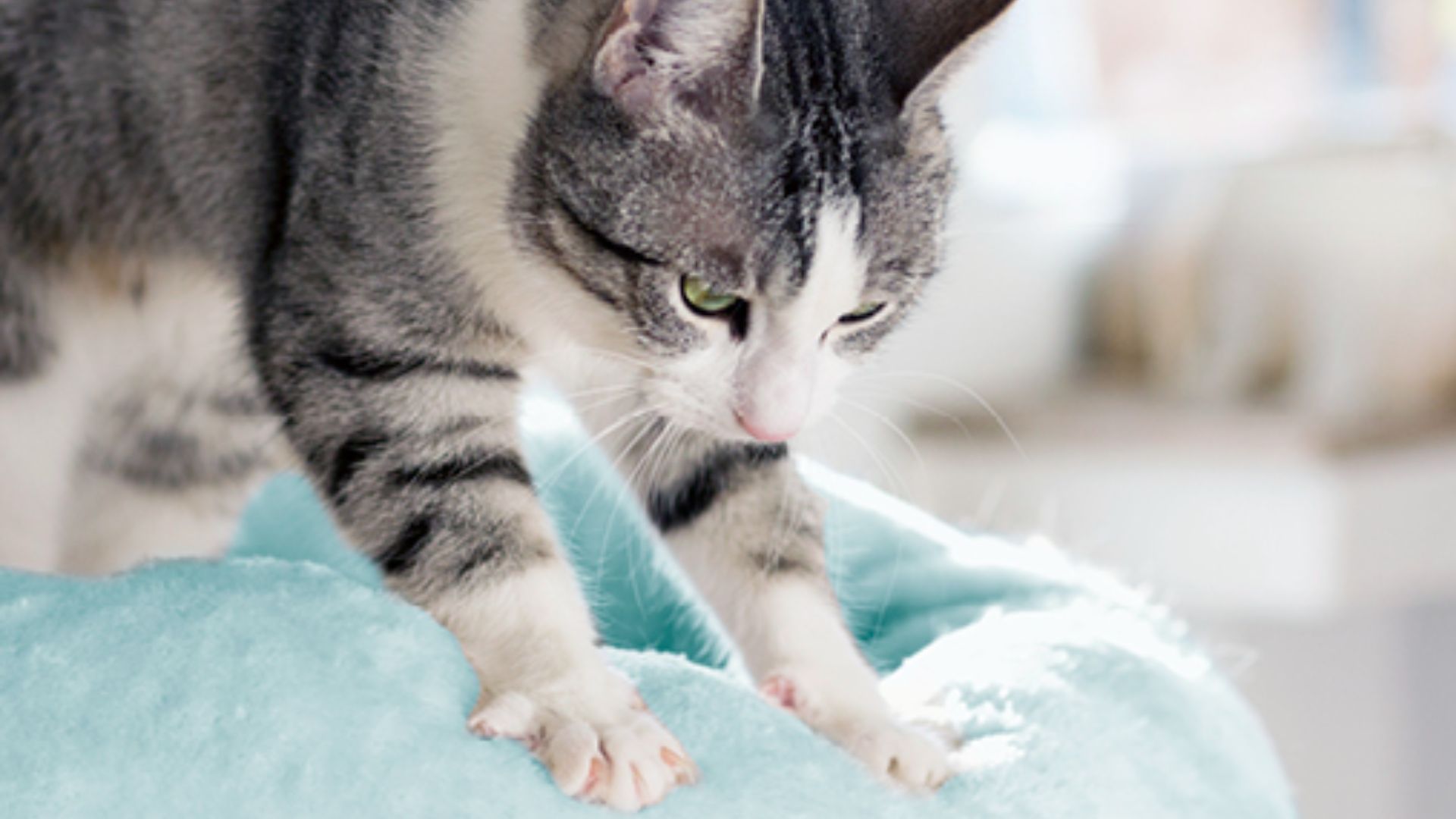
Why do cats knead
Table of Contents
Cats knead for various reasons, including marking territory, showing affection, and self-soothing. The behaviour is linked to the cat’s early life when they knead their mother’s belly to stimulate milk production.
This behaviour is often associated with positive emotions and contentment, but it can also be a sign of anxiety or stress. Cats may knead to create a comfortable and familiar environment, especially when they are feeling relaxed or safe.
Kneading can also be a sign of a cat’s attachment to their owner or a specific place. The behaviour is instinctual and is believed to be a way for cats to show their affection and contentment. Kneading can also be a way for cats to mark their territory, as they have scent glands in their paws that release pheromones when they knead. These pheromones can help cats feel more secure and comfortable in their environment.
What is the purpose of cats kneading
Cats knead for various reasons, including marking territory, showing affection, and self-soothing. Cats may knead to create a comfortable and familiar environment, especially when they are feeling relaxed or safe. Kneading can also be a sign of a cat’s attachment to their owner or a specific place.
The behaviour is instinctual and is believed to be a way for cats to show their affection and contentment. Cats have scent glands in their paws that release pheromones when they knead, which helps them mark their territory. Kneading can also be a way for cats to relieve tension and stretch their muscles. Overall, kneading is a complex behaviour that can have multiple meanings and functions for cats.
Health benefits to cats kneading
Cats have scent glands in their paws that release pheromones when they knead, which helps them mark their territory. Kneading can also be a way for cats to relieve tension and stretch their muscles.
Overall, kneading is a complex behaviour that can have multiple meanings and functions for cats. There are no specific health benefits to cats kneading, but it is a normal behaviour that can indicate a cat’s comfort and contentment.
However, if a cat suddenly starts kneading excessively or less than usual, it could be a sign of stress, anxiety, or an underlying medical issue. It’s important to monitor a cat’s kneading behaviour and consult with a veterinarian if there are any concerns.
Negative effects of cats kneading
SO far there seems to be no noticeable negative effect of cats kneading, but if a cat suddenly starts kneading excessively or less than usual, it could be a sign of stress, anxiety, or an underlying medical issue. It’s important to monitor a cat’s kneading behaviour and consult with a veterinarian if there are any concerns.
Health risks associated with cats kneading on people
Kneading is a normal behaviour for cats, and it is not typically associated with any negative health risks for people. However, it is important to note that cats can carry bacteria in their mouths, which can lead to local or systemic infection if a cat licks an open wound.
Therefore, it is generally recommended to avoid letting your cat lick any cuts on your skin, especially if you are immunocompromised. Additionally, some medical ointments may be harmful to your cat when licked, so it is important to inform your veterinarian if you apply any products to your skin or hair.
If your cat’s kneading behaviour becomes excessive or painful, it may be a sign of stress or anxiety, and it is recommended to consult with a veterinarian for further evaluation. Overall, kneading is a natural behaviour for cats, and it is generally safe for people, as long as appropriate precautions are taken.
Ways to prevent cats from kneading on people
To prevent cats from kneading on people, there are several strategies you can employ:
1. Provide a Soft Surface: Place a thick blanket or towel on your lap before allowing your cat to get comfortable. This barrier protects against the sharpness of the cat’s claws while still allowing them to indulge in their natural behaviour.
2. Regular Nail Trimming: Trim your cat’s claws regularly to reduce discomfort without hindering their enjoyment of kneading. This can help prevent any accidental scratching or discomfort when they knead on you.
3. Redirect Behaviour: Guide your cat to knead on a nearby soft pillow or cat bed instead of delicate skin. Offering an alternative surface for kneading can effectively prevent any discomfort for you.
4. Use Toys and Treats: Provide toys and treats to distract your cat and redirect their energy. This can help them release any nervous energy that may lead to excessive kneading.
5. Feliway Pheromone Diffuser: Consider using a Feliway pheromone diffuser to help reduce problem kneading by increasing your cat’s overall well-being. This can help create a calming environment for your cat.
6. Consult a Veterinarian: If your cat’s destructive kneading behaviour continues despite these measures, it’s advisable to consult with a veterinarian. They can provide further guidance and advice on managing your cat’s behaviour effectively.
By implementing these strategies, you can help prevent cats from kneading on people while still allowing them to express their natural instincts in a more appropriate manner.
How to train a cat to not knead on people
To train a cat not to knead on people, there are several strategies you can try:
1. Trim your cat’s claws regularly to avoid sharp edges that could cause discomfort or pain when kneading.
2. Use a pheromone-based spray to persuade your cat to knead on a bed or blanket instead of you.
3. Train your cat to use a “kneading-only” blanket. Place a thick blanket on your lap, and when your cat begins to knead, redirect them to the blanket. Eventually, they’ll learn that kneading is only okay if the blanket is there.
4. Redirect the behaviour by playing with a toy or teaching a trick each time your cat starts kneading. Consistency is key, and your cat will eventually learn that kneading is not acceptable.
5. Divert your cat’s attention with play and other enrichment activities if they start kneading at inopportune times, like your lap when you’re trying to work on your laptop.
6. Monitor your cat’s behaviour for any marked changes in kneading habits, as obsessive kneading may indicate an underlying problem. Consult your veterinarian if you observe any significant changes.
Do cats knead on people or only on objects
Cats can knead on both people and objects. Kneading is a natural behaviour in cats where they rhythmically push their paws into a soft surface, such as blankets, pillows, or even a person’s lap.
When cats knead on people, it can be a way for them to show affection and mark their territory with the scent glands in their paws. Therefore, cats may knead on both people and objects as part of their natural behaviour.


